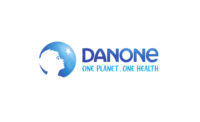
Superfood to the Rescue
by Pamela Accetta Smith
Senior Editor
Senior Editor
Experts offer insights on the latest scientific studies revealing dairy’s power in health and nutrition.
Dairy Field rounded up a panel of experts to discuss the latest
science surrounding dairy and affirm its role in overall wellness:
Peggy Biltz, chief
executive officer, Dairy Council of California
Gregory D. Miller,
executive vice president of science and innovation,
Dairy Management Inc.
Gail Barnes, vice president
of business development — fluid innovation, Dairy Management Inc.
Q: Dairy’s reputation as a
“superfood” continues to grow, with new scientific studies
revealing milk’s power in health and wellness. Dairy foods continue
to expand functionally as carriers of omega-3s, plant sterols and other
nutrients known to boost wellness and fight disease. How does new research
underscore these benefits and support the dairy-health/wellness connection?
Biltz: Research on milk and
dairy foods continues to be positive as connections are being made to more
health benefits including weight management and aiding in the prevention of
diabetes, hypertension, metabolic syndrome, cancer and osteoporosis. As
research confirms these associations, the focus is shifting to identifying
specific components in dairy foods that play a protective role. Calcium,
vitamin D, CLA, branched-chain amino acids and whey protein are some of the
components under investigation.
Research suggests, however, that consuming dairy foods
in their intact form provide much greater benefits than consuming these
components in isolation, suggesting there are synergistic effects between
the nutrients, and/or that there are other components in dairy foods not
yet identified that play a role in health and wellness.
Miller: Milk is the
original functional food. Dairy’s contribution to a healthy diet has
long been recognized and endorsed by health organizations ranging from the
American Dietetic Association to the American Academy of Pediatrics, the
National Medical Association and the American Academy of Family Physicians.
The fact that the 2005 Dietary Guidelines for Americans raised the
recommended number of dairy servings from “two to three” to
“up to three” each day clearly shows the consensus out there on
the value of dairy foods in a nutritious and healthy diet.
Emerging data now links dairy consumption to an
expanding list of health benefits, including reduced risk of osteoporosis
and colorectal cancer, better oral health, muscle-building after exercise
and maintenance of a healthy weight and blood pressure.
If Americans boosted their dairy consumption to three
to four servings each day (up from the current average of 1.7 daily
servings), experts estimate that our healthcare system could save
approximately $214 billion over five years. These emerging health benefits
are a value-add, because they build upon what we already know about the
nutrient richness of dairy foods.
Q: What is the latest dairy wellness-related research?
Biltz: Vitamin D, in
particular, is receiving attention for its potential health benefits
ranging from protection against cancer, periodontal disease and multiple
sclerosis, to improved immune function and cognitive performance. Fortified
milk is the major source of vitamin D in the United States. Efforts are
underway within the industry to fortify with vitamin D across the product
line — including yogurt, cheese and other dairy products — so
that the consumer can count on all dairy products, not just fluid milk, to
deliver certain levels of vitamin D.
Miller: The biggest trend
in foods and beverages these days is health and wellness. Nutrition
scientists are investigating many potential links between dairy and
wellness. For instance, consumption of dairy foods may reduce risk of
metabolic syndrome, which is a cluster of symptoms related to high
triglycerides, low HDL, high blood pressure, insulin resistance and
abdominal obesity, which increases risk for heart disease. Another exciting
area is milk’s potential superiority as a replenishment beverage for
athletes. Dairy protein appears to help build muscle mass when used as a
recovery beverage after exercise, and it may help prevent sarcopenia, or
age-related loss of muscle mass, in the elderly. Other research is
investigating why dairy could be an ideal delivery vehicle for probiotics,
as components in milk may turn on certain genes in probiotic bacteria,
enhancing their activity and benefit to consumers.
Still other inquiries are looking at the possible role
of dairy foods in reducing inflammation. It’s now believed that
persons who are overweight or obese experience a higher level of
inflammation, which may increase their risk of obesity-related diseases.
While this research is still in the very early stages, the data indicate
that dairy food consumption may have a role in reducing inflammation.
In dairy product and ingredient research, the Dairy
Management Inc. (DMI) National Dairy Foods Research Center Program is
responding to the health and wellness trend by funding new research and
technologies that industry needs to respond to consumer demand for health
and wellness products. For instance, we have an expert panel of researchers
working on development of low-fat cheeses that taste great and function
well.
The overall idea here is to help industry give
consumers the dairy and dairy-based products they need — when, where
and how they want them. DMI is leading the dairy industry to take a
consumer-driven approach that will help identify and meet unmet consumer
demand.
Q: What are the latest health benefits tied to dairy?
Biltz: The latest health
benefits associated with consuming dairy foods are in conjunction with
preventing insulin resistance, a pre-diabetic condition. In numerous
studies, dairy and/or calcium consumption have been associated with
reduction in risk of insulin resistance and metabolic syndrome. In
addition, recent research has shown that following the DASH dietary pattern
— a diet high in low-fat dairy products, fruits and vegetables
— tends to reduce insulin resistance. With the increasing prevalence
of obesity, type 2 diabetes rates are exploding and expected to reach
epidemic levels within the next few years. Dairy foods will play a critical
role in protecting against this disease, and the time is ideal as people
are seeking to avoid medications and manage their health through diet and
lifestyle choices. Best of all, most health benefits of dairy are reaped at
levels that are consistent with the current recommendations of three
servings per day.
Miller: When it comes to
bone health, oral health, lowering high blood pressure, maintaining a
healthy weight and reducing risk of colorectal cancer, the data that link
dairy to health benefits are mature and well-documented. Now, emerging
science is defining new health benefits that may be connected to dairy
consumption, including reduced inflammation, improved digestive health and
immunity thanks to probiotics, plus effective rehydration and lean muscle
accretion after exercise. Further research is focused on potential benefits
of saturated fat consumption. Researchers are investigating whether some
short-chain fatty acids found in saturated fats may help ward off cancer.
We are learning how ruminant trans fatty acids — that is, trans fats
found in dairy products and beef — are different than industrially
produced trans fats and could be neutral or even beneficial in terms of
cardiovascular health.
Q: What are the current efforts being made to make
dairy products more healthy?
Barnes: The growing
health and wellness trend provides an enormous opportunity for the dairy
industry to develop innovative products. According to the “Times and
Trends Report” issued by IRI earlier this year, functional foods and
beverages will play a significant role in the marketplace in the next 12
months. Consumers already trust dairy to be great-tasting and healthy,
making it an ideal food for further fortification. The resulting new milk
products — or “milk plus” products — add more
good-for-you nutrients, such as plant sterols and omega-3s, to milk’s
already nutrient-rich package of nine essential nutrients. Such value-added
milks are targeted, customized products designed to address lifestyle
needs. These innovative products give consumers what they want —
when, where and how they want it.
Examples of innovative new dairy products containing
omega-3s and/or plant sterols launched so far in 2007 include: Horizon
Organic® Reduced Fat Milk Plus DHA; Promise Activ
Supershots from Unilever Bestfoods, a yogurt-based drink containing plant
sterols in addition to omega-3’s; and Yoplait Kids Lowfat
Yogurt, a spoonable yogurt. From baby boomers concerned about heart health
to mothers seeking foods that promote kids’ growth and development,
dairy foods with added omega-3’s have a spectrum of consumer appeal
that stretches from “heart smart” to “a great
start.”
Biltz: There are
considerable efforts in researching, developing and marketing products that
use dairy as a carrier for certain components. Sterols and stanols are
being added to dairy to help reduce cholesterol levels; omega-3 fatty acids
are added for their heart healthy effects; probiotics and prebiotics are
fortified for their intestinal and immune benefits; and various vitamins
and minerals such as iron, and vitamins A, C and E are being fortified to
meet an individual’s specific needs. Throughout all of this it will
be critical to continue to educate the consumer on the inherent and
“added” health benefits of dairy foods, and to utilize
point-of-purchase labeling to inform consumers of a product’s
healthful components.
Q: How is all of this research influencing processor
marketing efforts?
Barnes: Consumers are
more interested in learning about product benefits than product
ingredients. They would rather hear that a product will help their family
by reducing cholesterol from dietary sources than know it contains plant
sterols. The challenge for the dairy industry is to talk about benefits in
ways allowed by regulations and the body of scientific evidence.
Manufacturers in other markets are leveraging a
picture being worth a thousand words and are, for example, using visuals to
convey benefits that are harder to express in words. An image of active,
happy kids on the label can visually suggest a product’s health
benefits ? especially as more packaging adopts a “photographic”
look that leverages the power of images. Other examples of consumer
outreach include Kroger® Active Lifestyle Fat Free Milk that is promoted as
the first cholesterol-cutting milk available nationwide. Kroger’s Web
site says, “Enjoying an 8-ounce serving of Kroger Active Lifestyle
Fat Free Milk with two meals each day can help you reduce total cholesterol
for a healthier heart.” The package for Horizon Organic® Reduced
Fat Milk Plus DHA claims that it “helps support brain & eye
health.” The Land O Lakes 1% Lowfat Cottage Cheese with
Probiotics package states that the product “improves
digestion.”
Q: Please update us on 3-A-Day — has the research
changed, been revised, stayed the same?
Miller: It’s clear:
Enjoying three servings of low-fat or fat-free milk or milk products every
day as part of a healthy diet, as recommended by the 2005 Dietary
Guidelines for Americans, improves the overall nutritional quality of the
diet. Health professional organizations such as the American Academy of
Family Physicians, American Academy of Pediatrics, American Dietetic
Association and National Medical Association also recommend three servings
of dairy a day. Sound science is the backbone of the 3-A-Day of Dairy nutrition
education program.
As I mentioned earlier, new research continues to
underscore the value of dairy in a healthy diet. For instance, a new study
shows that people who drank milk after weight lifting built more muscle and
lost more body fat than those who drank a soy- or carbohydrate-based
beverage under the same conditions. Those findings give active people yet
another reason to consume the recommended three daily servings of dairy
foods.
We will continue to see research that tells us how
consuming nutrient-rich dairy can help people live healthy lives.
Barnes: To that end,
everybody, it seems, wants to get healthy and stay healthy — while
still enjoying foods and beverages that taste great. The health and
wellness trend is not just a blip on the food-o-meter — it’s a
megatrend. In fact, more than 80 percent of Americans say they are
currently consuming or would be interested in consuming foods or beverages
for health and wellness benefits. Nutrient-rich milk and dairy are
perfectly positioned for innovative health and wellness products that
consumers truly want.
$OMN_arttitle="Superfood to the Rescue";?>
$OMN_artauthor="Pamela Accetta Smith";?>



